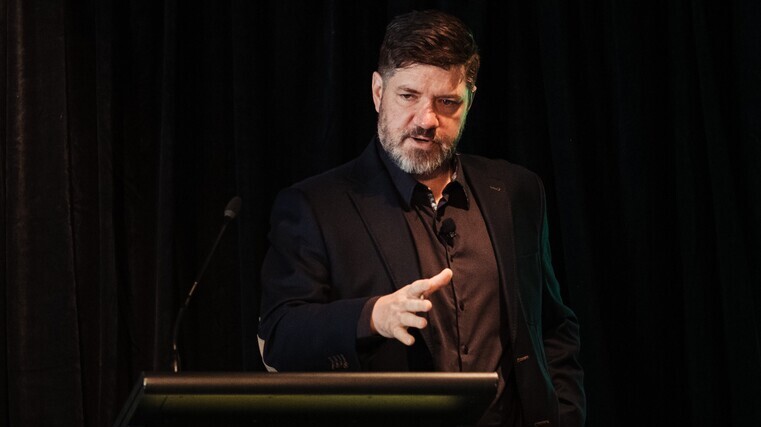Green shoots detected

Delegates at this year’s conference for the Financial Services Federation (FSF) who were seeking positive news have instead been left with the message that while there are early signs of recovery, the immediate future remains uncertain.
Kiwibank chief economist Jarrod Kerr told the gathering in Auckland that he expects interest rates to fall further and that asset values will rise – eventually.
“Everyone knows most were heads down in 2024, firefighting while orders and sales dried up and profitability took a hit. We were told to hang in there and survive because it would be a case of ‘thrive in ’25’.
“But that’s failed to eventuate. That recovery just hasn’t happened. The growth isn’t there, so much so that some are saying the economy is worse than the 2024 recession.”
Kerr, pictured, apologised for being unable to come up with a catchphrase, offering “fix in ’26” as the best he could do, predicting interest rates would fall again and a turnaround would begin to take hold.
“Optimism is beginning to emerge. If you cut far enough, asset markets will rise and we’re seeing interest cuts that are putting more money into people’s pockets.
“If you’re paying six to seven per cent interest and it falls to five to six, you tend to shrug and save that difference. But when it falls to four per cent that raises confidence. It tends to see people and businesses willing to spend.”
Kerr laid much of the blame for the sluggish economy at the central bank’s door. “The recession we’ve been through, and which continues to linger, was engineered by the Reserve Bank when it kept interest rates high for too long. Other countries moved sooner, so you need to ask why we are the only country still in a bad space.”
Kerr told attendees at the conference on November 6 he believed former Reserve Bank governor Adrian Orr paid the price for his failure to cut, a stand that meant the coalition government was presiding over an economy shedding jobs and with businesses faltering.
“One of the worst outcomes is that we’ve lost good people to our other labour market, the one across the Tasman, but we’re seeing banks and other lenders getting back into the market, adding a little water to those initial green shoots.”
Another factor, Kerr said, given New Zealand’s size, was US President Donald Trump’s tariff war. “You need to look at this from way back in 1820, 200-odd years. For the first century, 90 per cent of American government revenue came from tariffs. There was no income tax until 1913.
“Higher tariffs are Trump’s way of paying for tax cuts. It might generate revenue, but most tariffs slowly fall to about 10-15 per cent because anything above that forces customers to look for alternatives.
“Our US exports revolve around beef. I don’t see Americans stopping eating hamburgers and eventually falling tariffs will boost trade again.”
Kerr said liberal trade agreements after World War Two led to globalisation, although recent slowdowns and protectionism had caused what he termed “slowbalisation”.
“Smaller economies like ours can be hit by relationship changes with trading partners, part of the reason we’re chasing deals with emerging markets in Asia and India.”
All of which keeps the government focused on interest rates and getting inflation under control. He added inflation was trending back down to the two per cent mark, a position that could only help fuel recovery.
“It’s bleak when your optimism is based on the premise things can’t get worse and a turnaround is about to start, but ultimately we just have to hurry up and wait for that to happen.”





